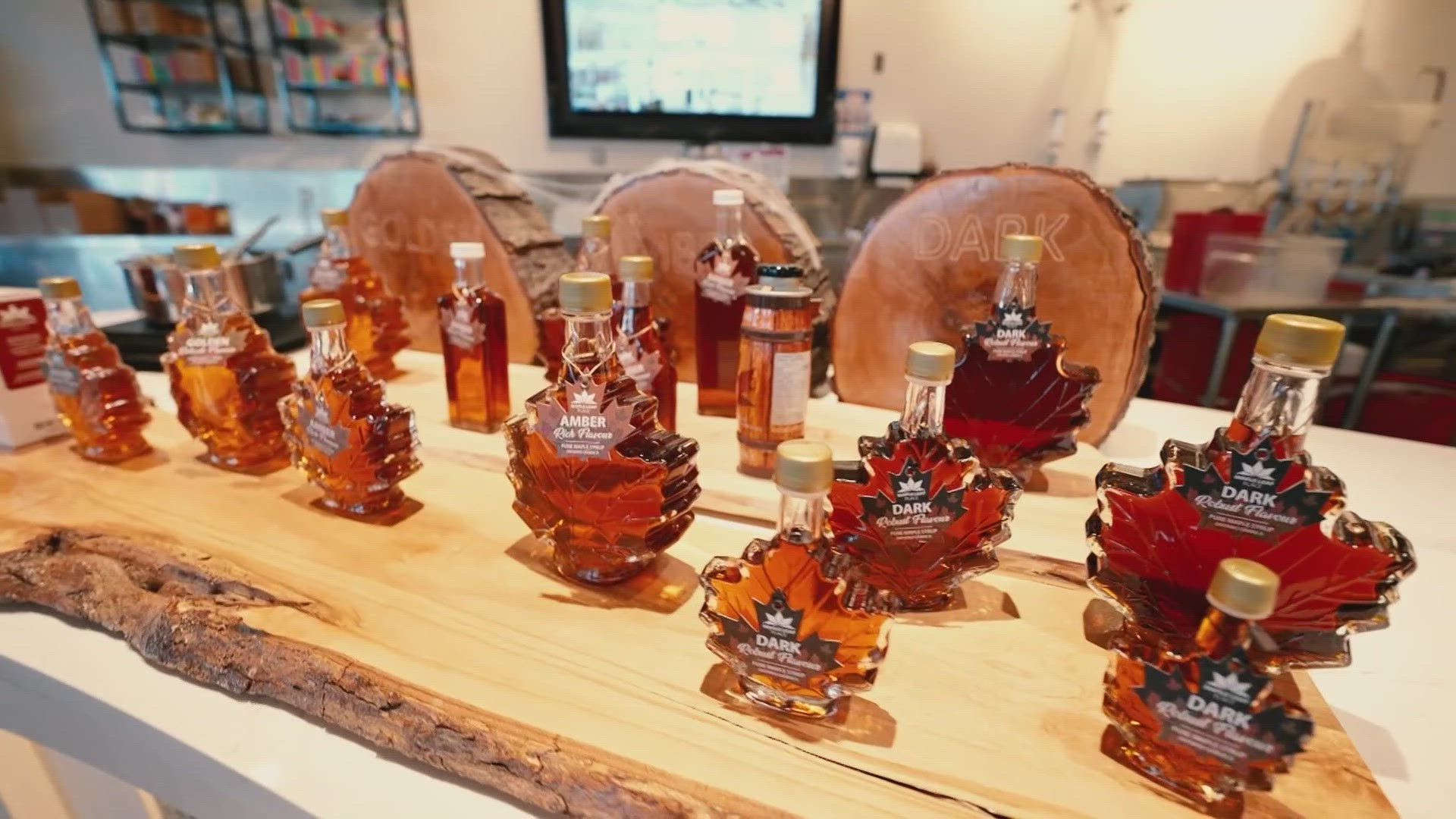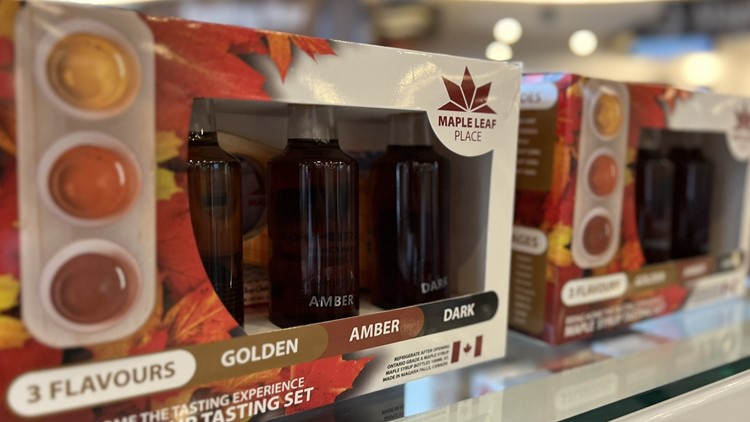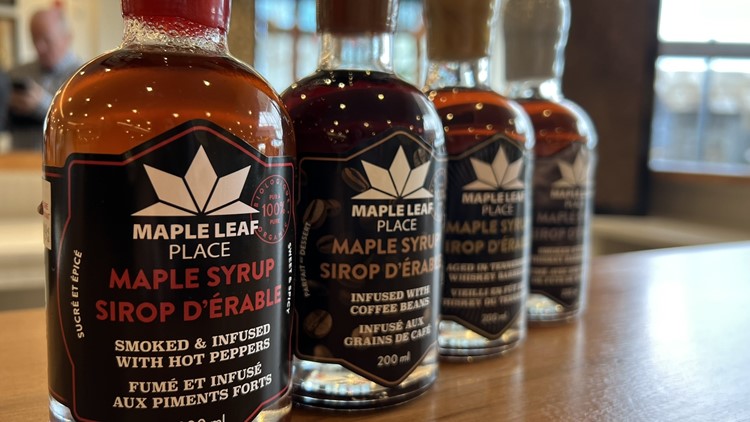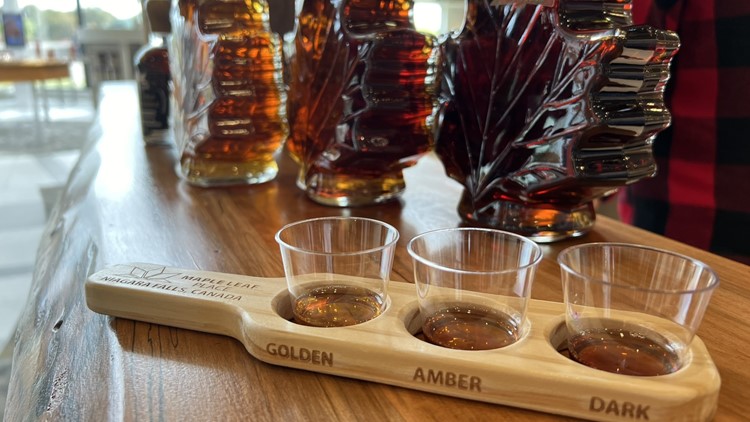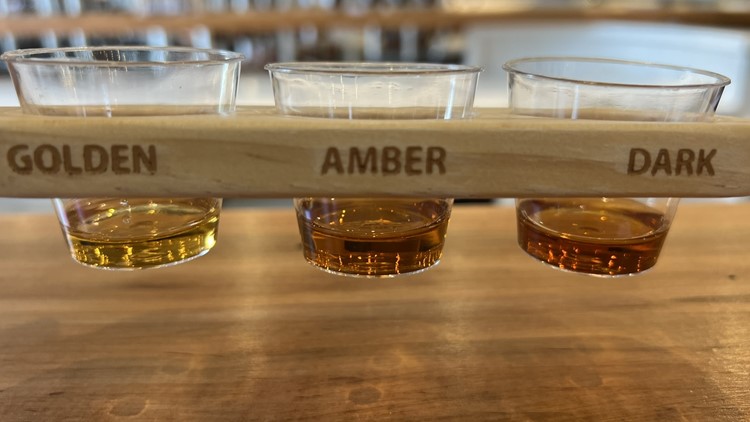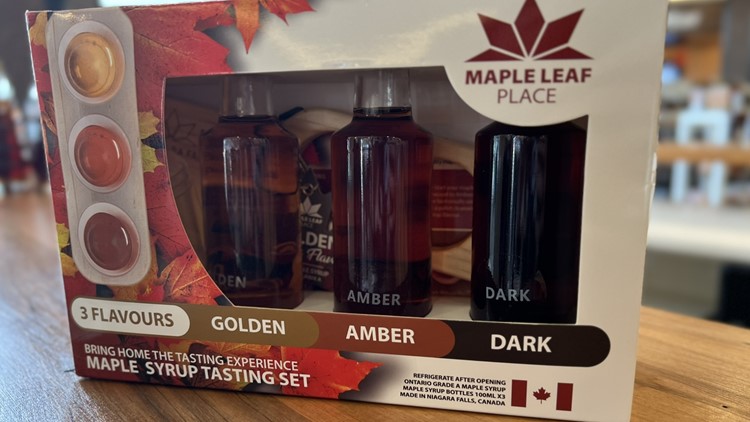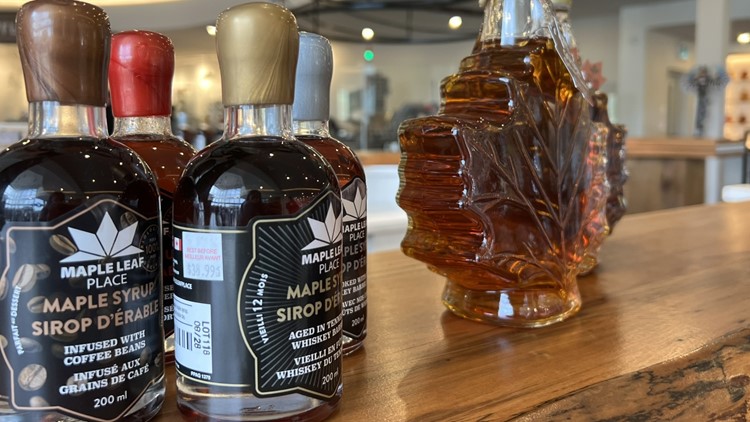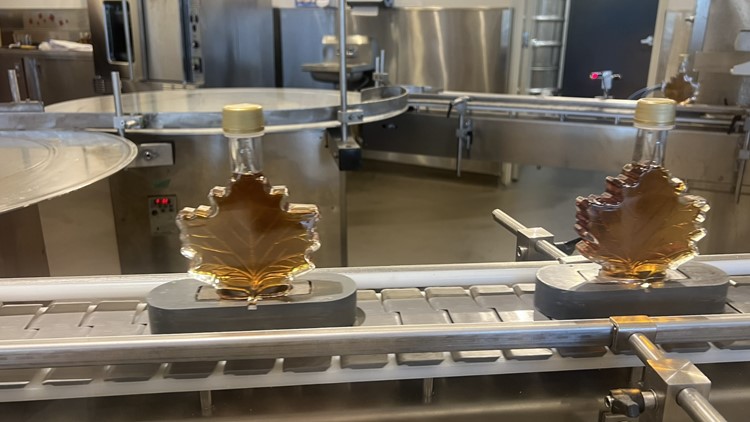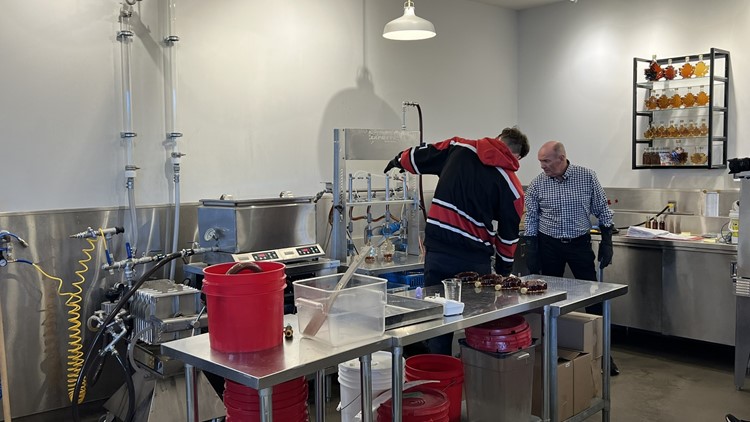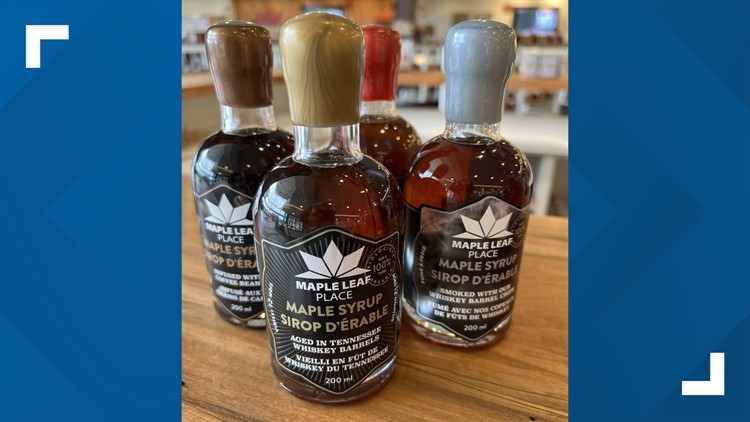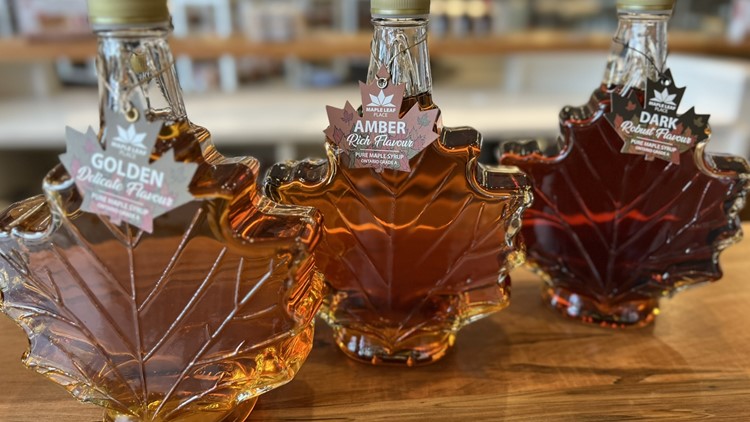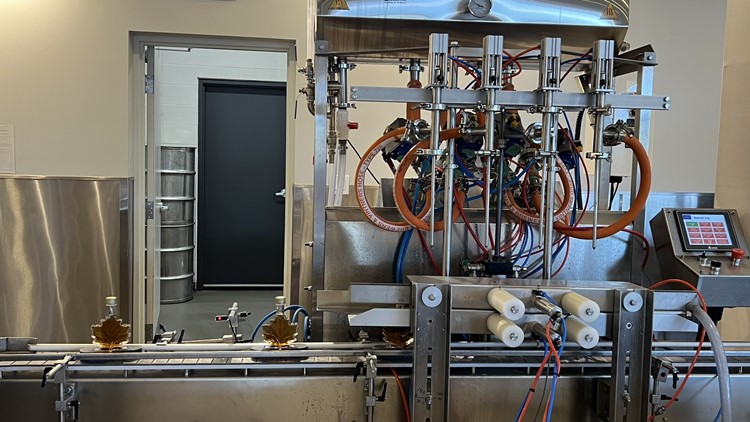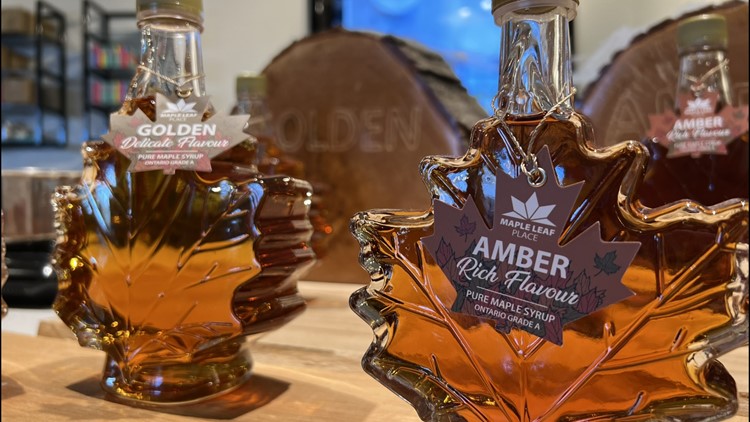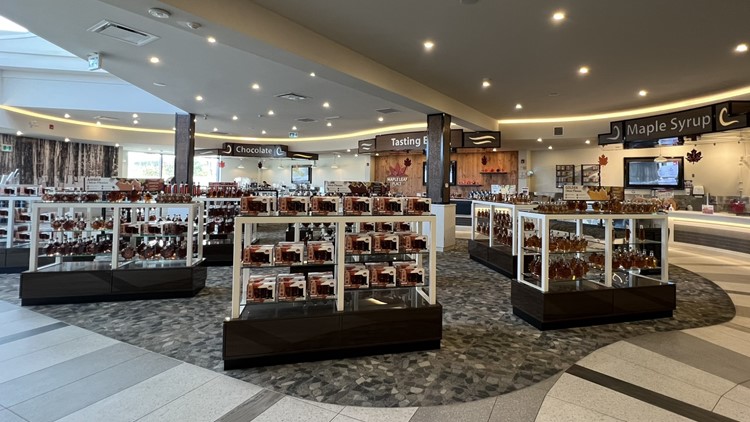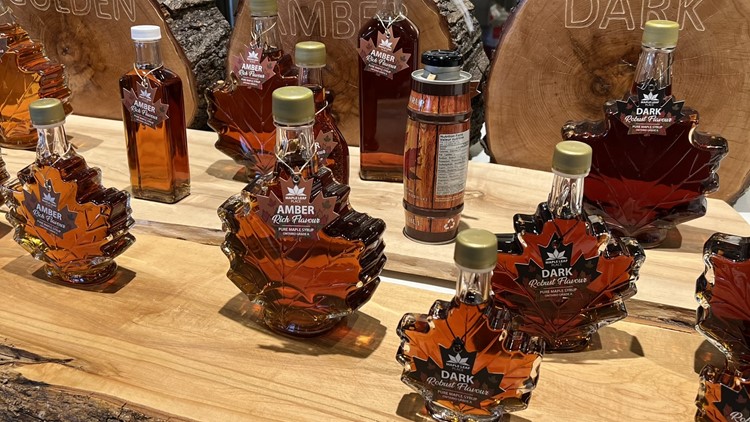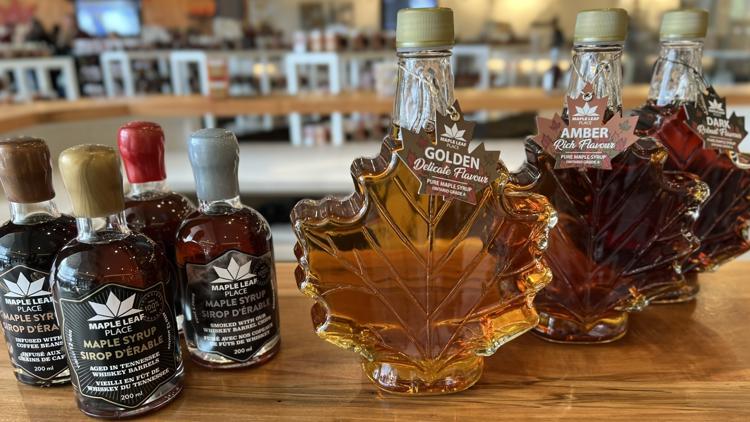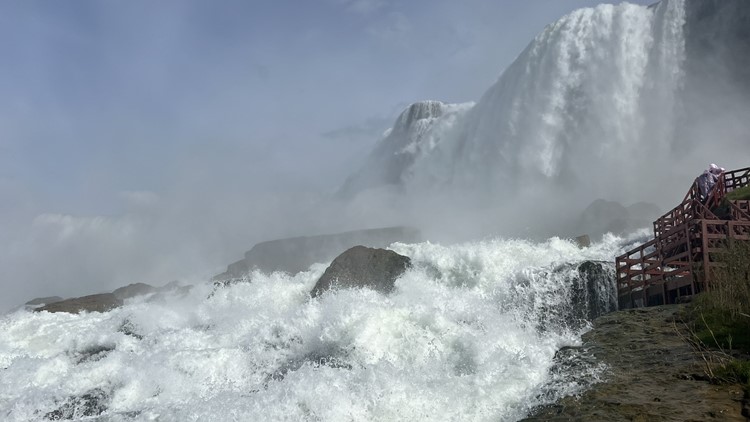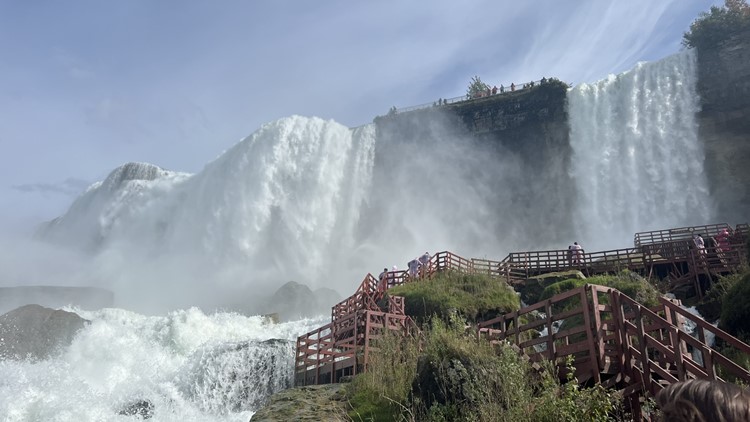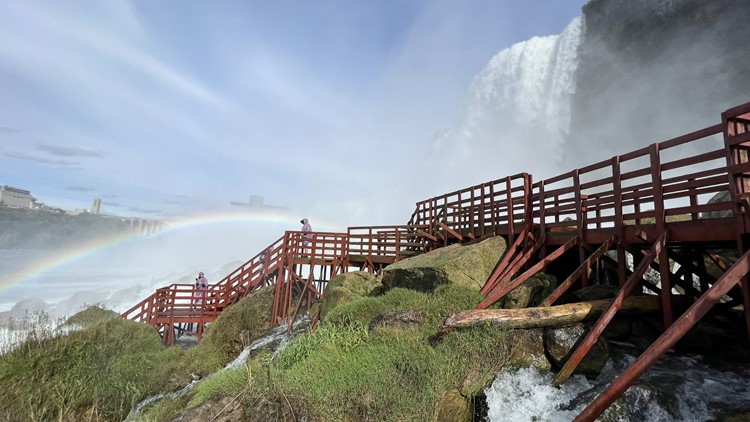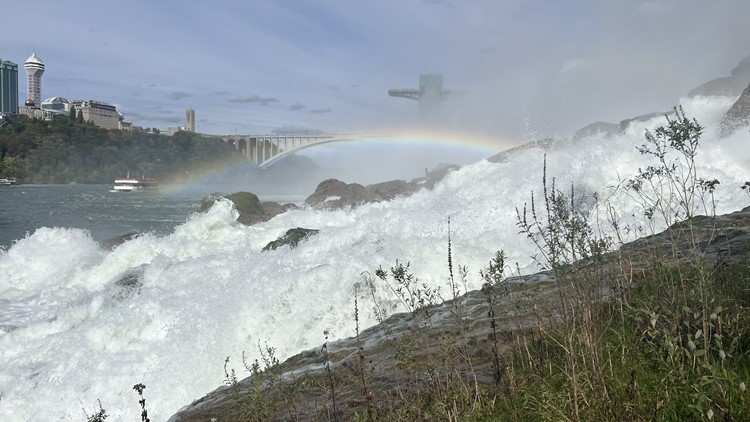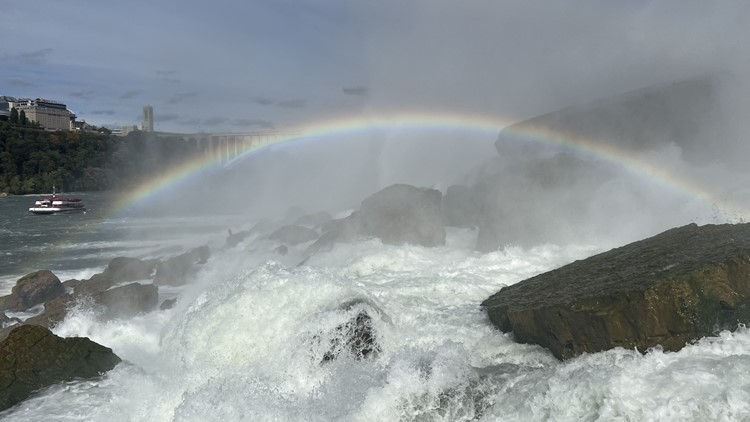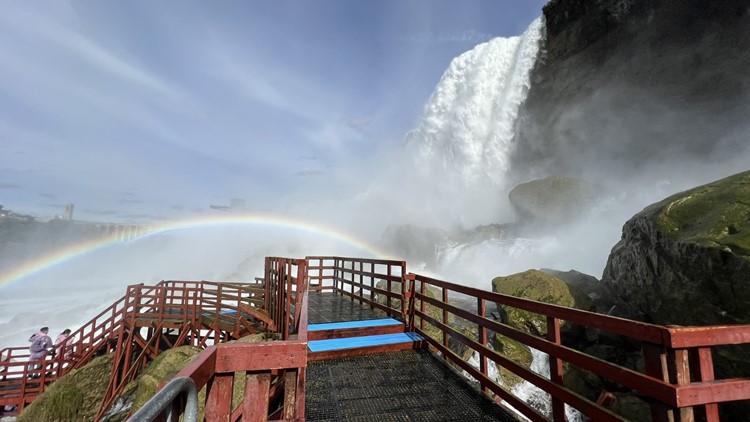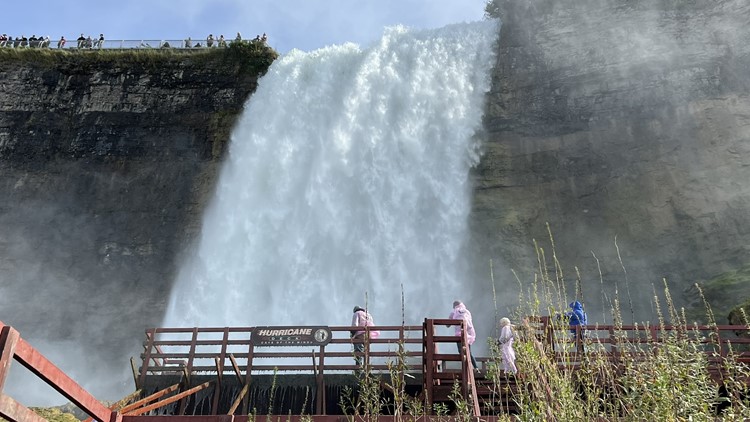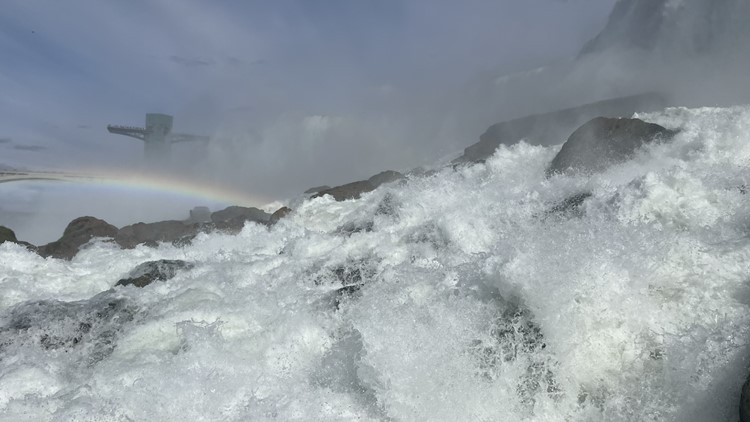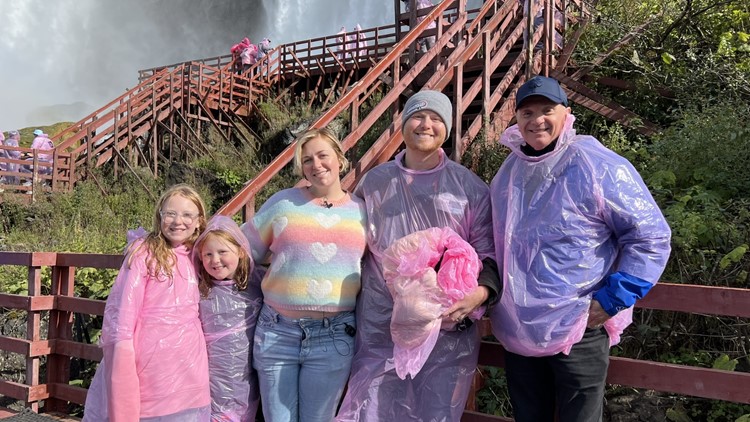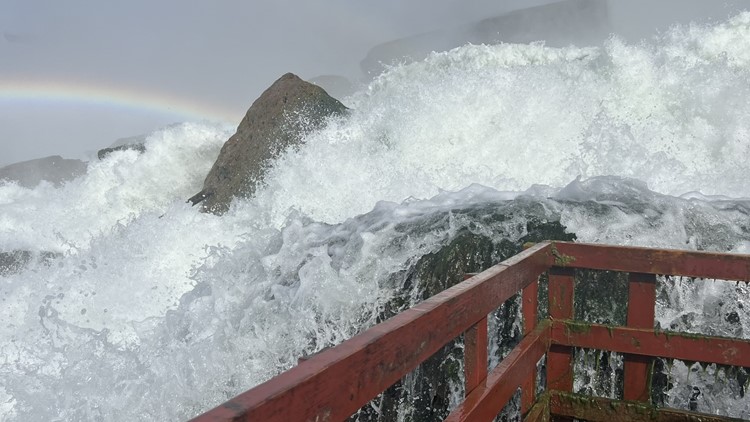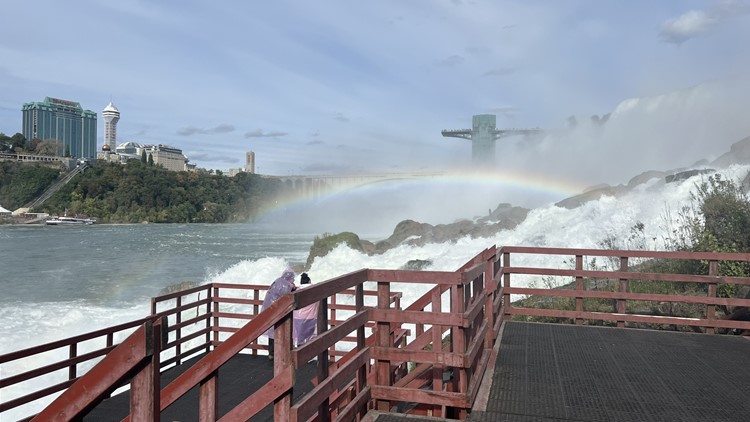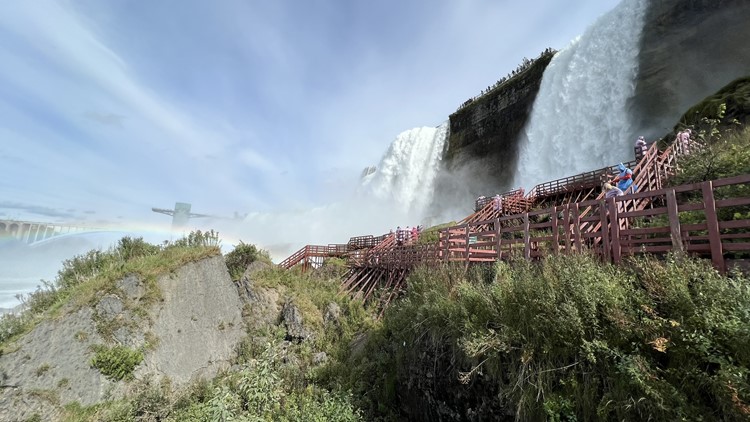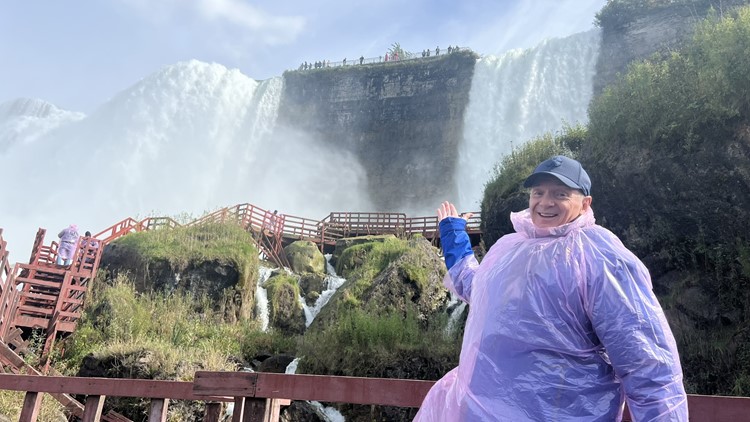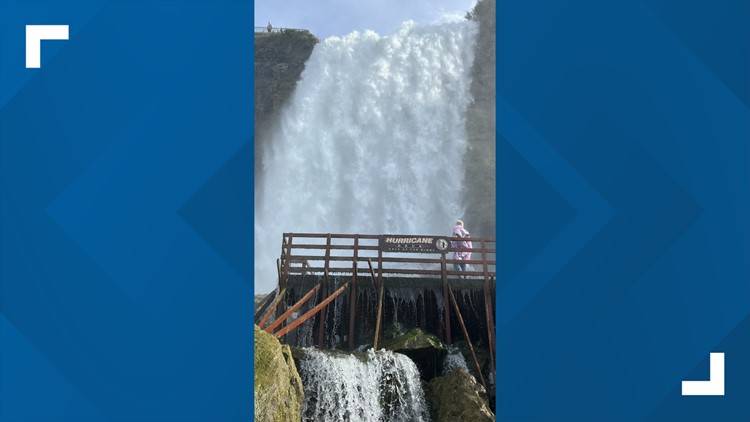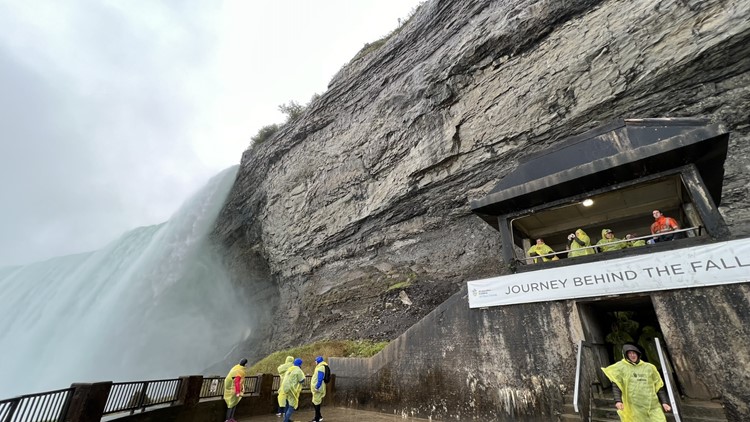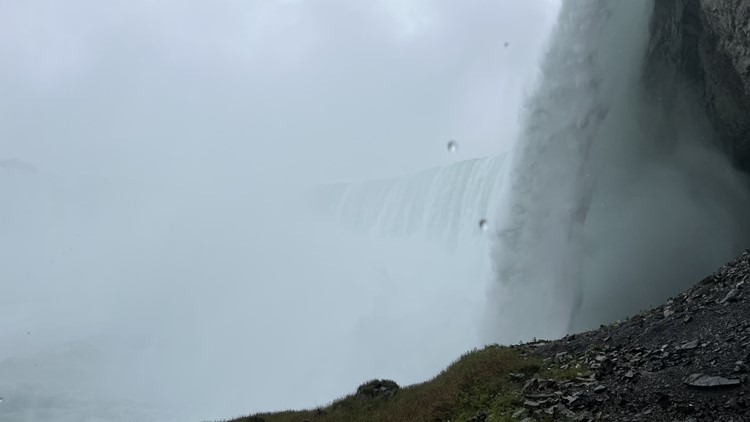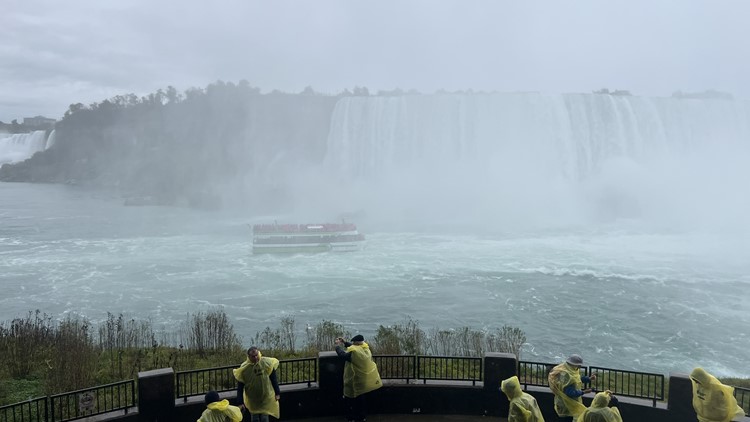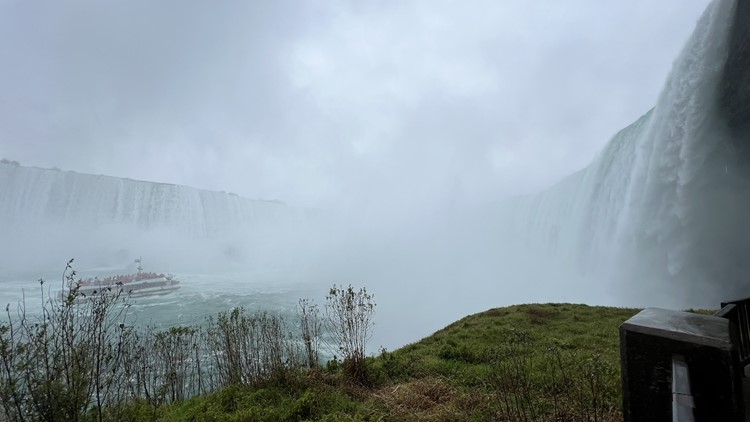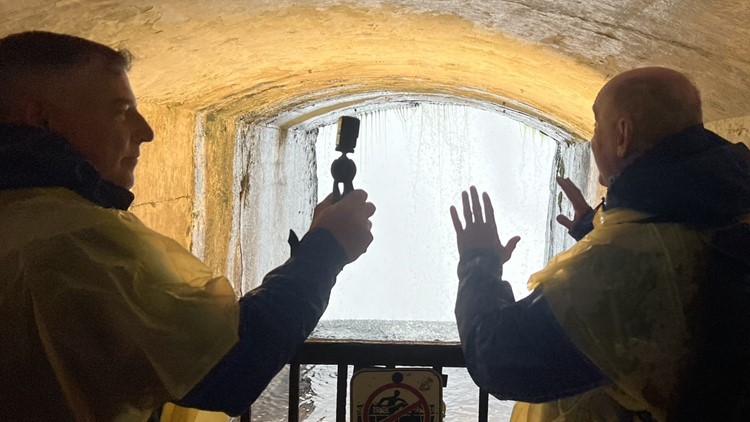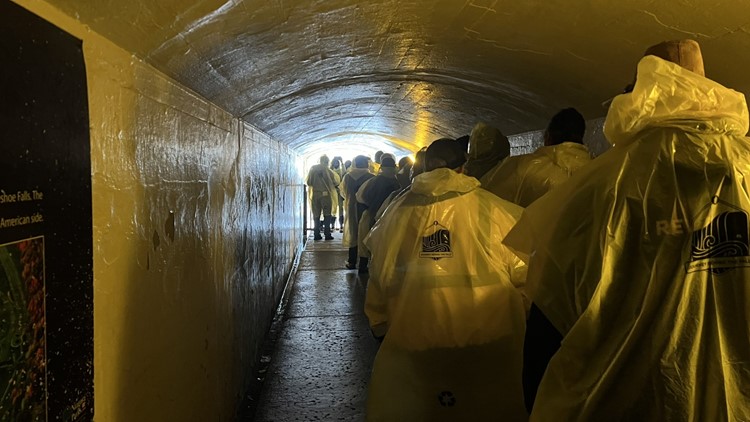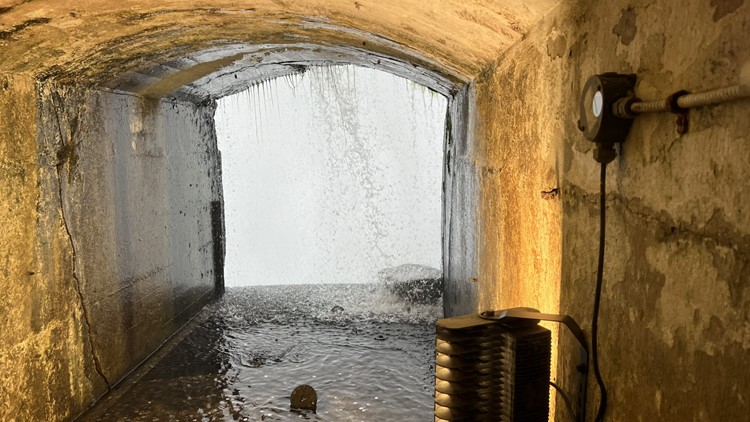NIAGARA FALLS, ON — Chuck Lofton, producer Megan Simpson and photographer Steve Rhodes explored the majesty of the gorgeous natural wonder known as Niagara Falls. They also went into the neighboring communities to check out all the area has to offer.
The team explored Niagara Falls from both the U.S. side and Canadian side.
Maple Leaf Place and maple syrup
Think about Canada and what comes to mind?
Hockey, polite people, breathtaking scenery, wildlife and maybe, just maybe, maple syrup.
According to the agricultural arm of the Canadian government, Canada produces 85% of the world’s maple syrup. With gorgeous red, black and sugar maples, the country has just the right mix of cold nights and warm days to produce the clear sap used to make maple syrup. Canada’s maple syrup producing regions are located in the provinces of Quebec, Ontario, New Brunswick and Nova Scotia. Maple syrup has long been part of Canada’s cultural fabric. The country’s Aboriginal peoples taught early settlers how to harvest sap and boil it to make maple syrup.


So, it is so appropriate that just a few short miles away from the celebratory atmosphere of Niagara Falls is another kind of celebration called Maple Leaf Place.
''It really is our love letter to maple syrup and maple harvest. We have coffees, we have teas in maple syrup, we have truffles, we have chocolate fudge, we have cookies, candies, lollipops, you name it, we try to make it maple syrup," said Kenny Ewert, marketing director at Maple Leaf Place. "We love to find new flavors and new things to sell here. Basically, if it can have maple syrup in it, we want to sell it to our customers and let you just experience it."
Guests here relive the First Nations tribes experiments with syrup, and you can see the production and bottling process with a close-up look at how the three types of syrup — golden, amber and dark — are produced.
Forget wine tasting. At Maple Leaf Place, syrup tasting is on everyone's mind!
"We do offer these little tasting flights in our tasting room. What we like to do is we like to hold up the flight, we like to see the three different colors. The difference between the three different maple syrups is harvest. Harvest season is from February to the end of March, and depending on when it was harvested from the tree, it gets darker and darker as they tap the tree," Ewert said. "The interesting thing about golden maple syrup is that it has hints of vanilla, and it has a subtle maple taste. Something that's interesting about Ontario maple syrup versus Quebec, maple syrup is because of our soil in our climate in the great Niagara Falls, in our weather here, our maple syrup actually tastes dramatically different than Quebec's maple syrup."
Chuck's Big Adventure Maple Leaf Place
Ewert went on to say, "So if you have tasted Quebec maple syrup, you should still come try our maple syrup because it is a different taste profile. Some people actually say that Quebec maple syrup actually has more of like corn flavor to it, whereas we have a more natural kind of flavor to our maple syrup. I don't want to get in trouble, though."
I agreed with Ewert: My flights all tasted like pure maple syrup without the grainy taste. The dark flavor is the kind I would use in a glaze, for instance, in preparing a salmon dish.
"It's noticeably darker than the golden one. The dark is great for culinary. It's great to cook with because the darker the flavor of maple syrup, the more it won’t boil out or it won’t dilute the maple flavor," Ewert said. "Because it was harvested last in the season, it was actually in the tree longer."
There is every conceivable kind of syrup product here and the syrup is bottled on-site to maintain its fresh flavor. If you want to try Canadian food, have lunch here. We enjoyed the famous Canadian dish, poutine here, a not-so-healthy but oh-so-delicious combination of French fries, gravy and cheese curds.
Visit Maple Leaf Place and you'll probably never settle for regular grocery store syrup again because here, the syrup is rich and pure and oh-so-Canadian!
Niagara Falls: The U.S. side
Ask most people who have visited Niagara Falls and they will probably point out the contrasts between the American and Canadian side. True, Niagara Falls Canada has a beautiful view with hotels, restaurants, attractions and generally a more cultivated tourist experience.
Don't sell the American side short, though.
Niagara Falls State Park is a beauty. From the water to the landscaping to the acres of up-close access to the falls, the park is not to be sold short.
Niagara Falls State Park is the oldest continuous operating state park in the United States. A group of concerned citizens, back in 1883, wanted to save this area from commercial exploitation and make it available to everyone. Twenty years ago, $44 million was put into a revitalization of the property, and that investment paid off with this area maintaining its position as one of America's most popular vacation spots.

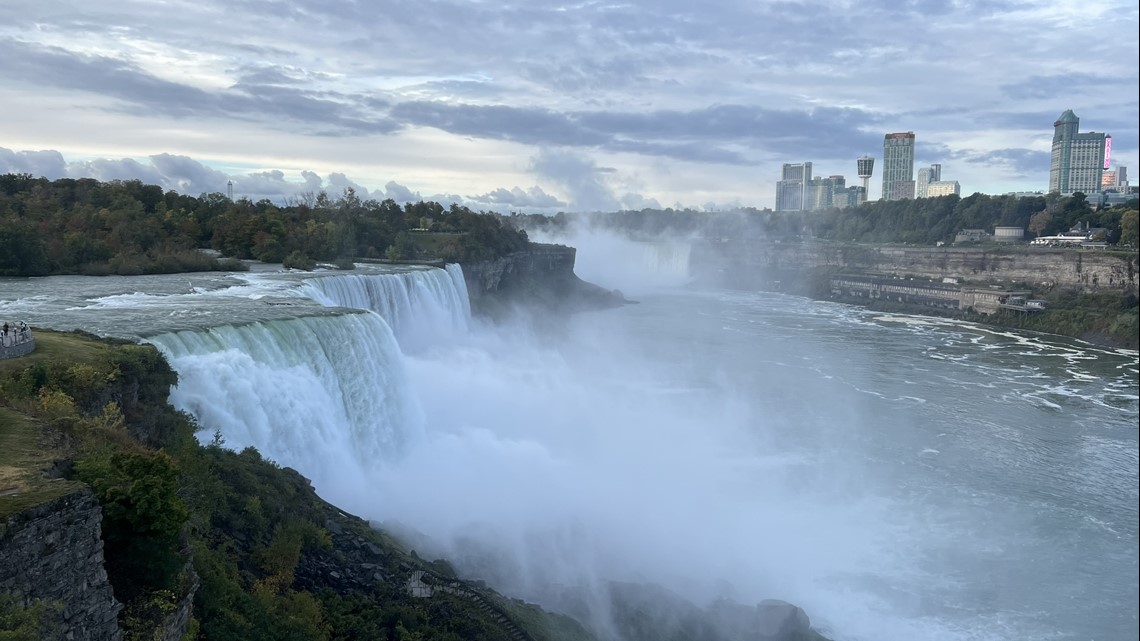
Maintenance supervisor Brendan Walsh has a big responsibility in making sure the meticulous grounds stay that way, and he loves the fact that visitors here have wonderful access to the majesty of this place. He also has a few favorites.
"Oh, Cave of the Winds. It's a thrill of a lifetime. Take the elevator down to the base of the Bridal Veil at American Falls. You can walk through the white water, right up to the front, 10 feet from the base," Walsh said. "Originally, they went behind the Bridal Veil Falls, the cave collapsed in 1920. Since then, they've had the walkways taking people right up to the front."
Luna Island is part of the park complex and offers a sensational view of the powerful American Falls. Walsh said it is a real fan-favorite due to the up-close view.
"That's one of the most popular things I hear down at the bottom. 'I can't believe they're letting us stand this close.' They say the Canadian side has a better view, and that's because they're looking at America," Walsh said.
The fact that the New York side lacks the restaurants and touristy spots doesn't seem to have hurt. Niagara Falls State Park draws more than 12 million guests a year, and many of them are from other countries, especially, in recent years from India and Korea. Walsh answers lots of questions and suggests viewpoints and must-see parts of the park to take in.
"There are people whose religions center around rivers, people from India, other parts of Asia. Rivers are a religious experience for them, and it seems like they enjoy it when they're down there. You have to do Cave of the Winds. You have to do Maid of the Mist," Walsh said. "I always recommend seeing the whirlpool as well. Whirlpool State Park just down river. They have an extensive hiking trail system all along the river as well."
Chuck's Big Adventure to Niagara Falls: Cave of the Winds
The Cave of the Winds is a very unique place. Located 175 feet from the top of the Niagara Gorge, you'll get wet, windblown and so glad you got this close to the natural roar of the falls.
From the Maid of the Mist to fireworks shows, from restaurants to a thrilling observation deck and the Hurricane Deck near American Falls, there is so much to see on the United States' side of the falls, and one can't experience the history and legacy of this natural attraction without spending time here.
Go to the park's website, download the app, make reservations ahead of time and experience Niagara Falls, American-style!
Niagara Falls: The Canadian side
The Niagara Parks Power Station is the newest of the Canadian side attractions, and it makes the power of the falls and its importance to this area come alive.
For generations, the falls have provided much-needed electricity to the whole region. Getting a look at how that happened has been jaw-dropping for tourists who come up-close and personal with the magnitude of this power plant.
"Throughout the generator hall floor, we have different exhibits. We tell the story of the power station. We tell the story of those who worked here. And what's wonderful is there are still people living in Niagara who worked in this power station because it did operate from 1905 to 2006," said David Adames, CEO of the Niagara Parks Power Station. "We really want to capture those stories. Another important story from our Indigenous communities, Indigenous partners, the importance of the environment, the importance of water and how that related to this power station."
According to Adames, it was new at the turn of the 20th century.
"There was this competition by innovators, entrepreneurs to build hydroelectric power stations on both sides of the border," Adames said. "On the New York state side, power stations were constructed first and then power stations, three of them were built on this side. Niagara Parks Commission negotiated 100-year leases with three different companies to build power stations. So, this was the very first one again, opened in 1905. The other two opened in 1906."

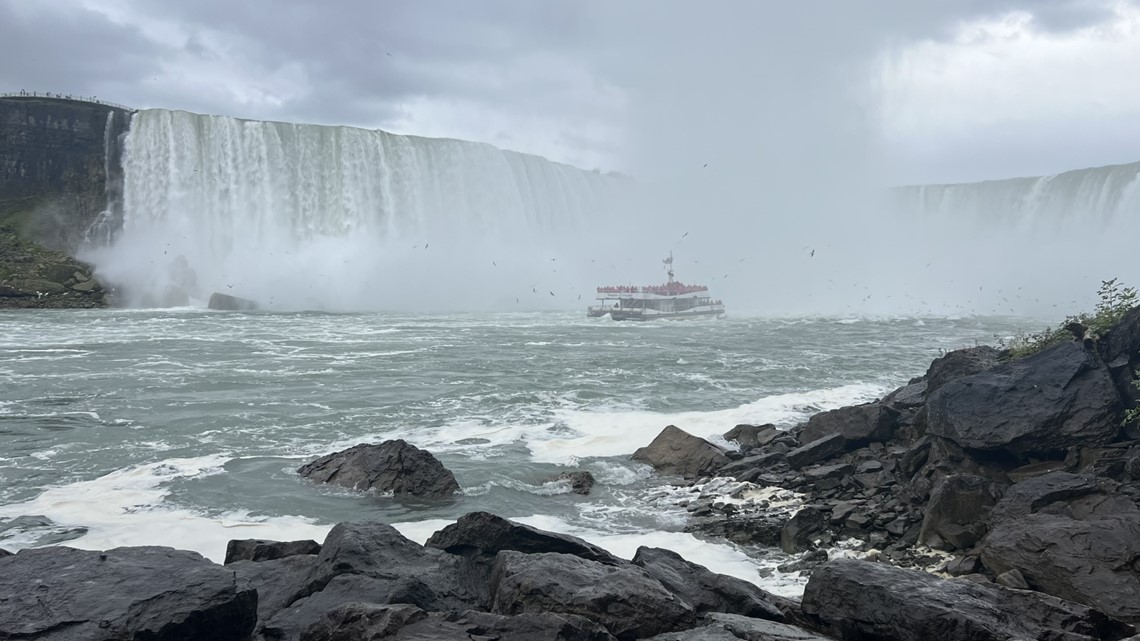
There is much more to this visit.
The Tunnel at the Power Station gives guests a completely new perspective on Niagara Falls. Taking a glass-paneled elevator 180 feet down, there are exhibits showing how it was excavated in 1901 with dynamite, pick axes and shovels.
The walk from the Tunnel to the Falls is next, and it is thrilling with anticipation of the extraordinary view that is coming.
"We hope to appreciate what went into this back at the early part of the 20th century. Now that we preserve this as a visitor attraction, but the engineering marvel that it was is a beautiful Roman arch structure tunnel brick lined the entire way. Again, we've made it accessible today with an accessible walkway," Adames said. "We're walking underneath the park at the moment, so we never go underneath the river, and it's underneath the park. And where the lights are today is roughly where the water would have been, how high the water was when the plant was operating."

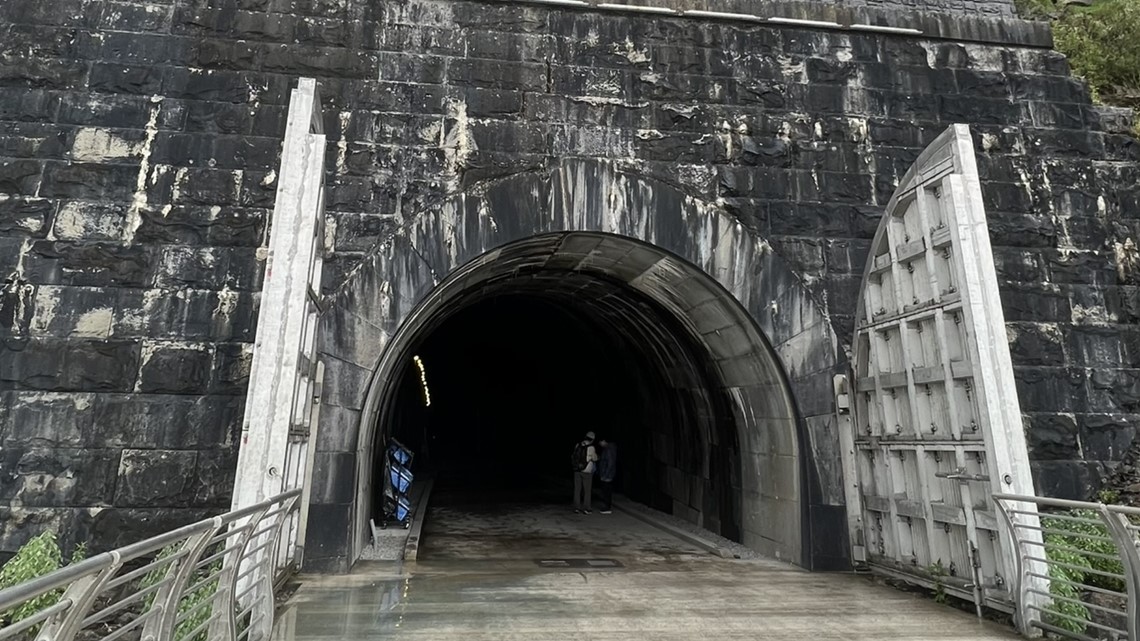
With millions of gallons of water originally going through here, the walk is breathtaking, but the end of the long walk is worth it, with a bucket-list view of Horseshoe Falls from the observation deck. The tunnel served as an exit point for water used in generating hydropower for more than 100 years. Now, the newly-constructed viewing platform offers a fairly new and rarely-seen, close-up view of the mist, the roar and the wonder of Niagara Falls.
"This is the tunnel where the water came out after doing its job, and now, it's turned into a visitor attraction to see this spectacular view," Adames said. "It truly is not just the river, but you also look back and see the whole gorge wall as well. So, it really gives you a sense of scale."
It may for some, be their favorite view of Niagara alls because of the unique and unbelievable closeness to the falls that drops 675,000 gallons of water per second. If you are ever in the area, check out this new attraction with history, awe and a damp encounter with North America's most wondrous site, all in one visit.
Behind Niagara Falls
One of the many ways to get a unique experience at this wonderful part of North America is Journey Behind the Falls. The Niagara Parks Commission has run this attraction for decades, and up until the 1990s, it was known as Scenic Tunnels.
Chuck's Big Adventure to Niagara Falls: Journey Behind the Falls
Located near the Canadian side of Horseshoe Falls, Journey Behind the Falls consists of an observation deck and a series of tunnels that gives guests a unique look in back of the cascading water.
This will be an unusual but certainly not the best view. The view from the portals in the tunnels is more restrictive due to the erosion of the hole in the gorge the past few years.
More of Chuck's Big Adventure to Niagara Falls:
- Chuck's Big Adventure to Niagara Falls: Maid of the Mist, helicopter tours and ziplining
- Chuck's Big Adventure to Niagara Falls: Old Fort Niagara and Clifton Hill
- Chuck's Big Adventure to Niagara Falls: Niagara Falls Underground Railroad Heritage Center and Herschell Carrousel Factory Museum
- Chuck's Big Adventure to Niagara Falls: Whirlpool Aero Car and Jet Boat Tours

